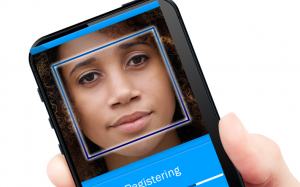
How secure is too secure?
In today’s world of identity theft and security risks, it’s easy to claim that you would do anything to protect you and yours.
In practice, however, security often takes a backseat to convenience. Security measures that involve multiple steps and stringent identification (be they password, facial recognition, or codes) are less desirable than those that let you pass with a single scan.
That’s the contradiction that Applied Recognition is trying to resolve.
Based in Oakville, Ontario, Applied Recognition was founded in 2005 by Don Waugh and Ray Ganong with the ultimate goal of perfecting facial recognition technology for use in consumer and security applications.
The pair originally started with consumer-focused facial recognition software applications. Their first official product was a photo-tagging tool called FotoBounce that conveniently identified and tagged people in personal photos for convenient sharing, organizing and archiving.
It wasn’t until Don visited the Mobile World Congress in 2015 that he discovered a need for a robust yet convenient corporate and government security solution—a need that Applied Recognition was in a unique position to fill.
To spoof or not to spoof
Facial recognition software is nothing new. It’s long been a staple of popular culture and many devices today—from smartphones to laptops to specialized devices—are capable of identifying you from a single facial scan.
The thing that ultimately holds facial recognition back from widespread use, however, is its tendency to be spoofed by a simple photo. It makes sense, after all. If the security app is looking for your likeness, and you show it your likeness, then you’re in. It doesn’t matter if it’s your real face or a flat image.
Lighting and camera quality also make it difficult for facial recognition to be taken seriously, since not everyone has a smartphone with high-end cameras, nor are they always in the best lighting conditions. Both of these factors affect login accuracy. There’s nothing more frustrating than getting locked out of your account just because a restaurant is dimly lit.
All of the above weaknesses make it practically impossible for facial recognition to be widely adopted as a scalable security protocol, especially in sensitive areas like government, defense and finance. The inconvenience and inaccuracy also limits its use in consumer applications, where ease of use is paramount.
Recognizing the solution
Applied Recognition co-founders and CEOs Don and Ray knew that their solution could remedy these problems, and with a host of complimentary capabilities and ease of implementation that no facial recognition software competitor could match.
The company’s latest security product, Ver-ID, prevents image spoofing by requiring the user to change head position several times during the login process. This is an impossible test for photos to pass, and the requested positions are randomized as well for added security.
Lighting and facial expressions are not a problem either, since Applied Recognition invested a huge amount of time and effort into ensuring that their capturing software could account for a wider and more challenging set of environmental factors.
But the biggest advantage Applied Recognition holds over its competitors is its versatility. Out of a list of over thirty competitors, only Applied Recognition had both a mobile application, digital signature authentication, and the ability to scan and accept photo ID credentials such as a passport authenticator.
All of these factors and more mean that Applied Recognition is in a unique position to affect change within the security industry. Already, Applied Recognition customers from all over the world approach the company for assistance in adapting the system to their unique use case.
Community ties
Don and Ray aren’t just concerned with making the company grow. They are also active participants within the Oakville business community and take great enjoyment in meeting and assisting other serial entrepreneurs through a technology community called Silicon Halton.
“Silicon Halton fulfills a very important role in both the Halton and IT industries,” CEO Ray Ganong said. “While we’ll never be ‘the Valley,’ Silicon Halton acts as a catalyst that helps us network and form friendships and partnerships that will help us all grow and prosper.”
When asked what advice he could give to prospective entrepreneurs, Ray said, “We encourage participation in Silicon Halton and other similar organizations. You’ll meet industry veterans, specialists like ourselves, and if you’re lucky you may even meet an 18-year old who will turn into the next IT superstar.”
The road ahead
Applied Recognition is currently expanding its influence within the security industry, signing projects that cover both consumer finance services and IoT devices. As the need for greater personal security arises, Don and Ray aim to be at the forefront of facial recognition software and a key player in the years to come.
ABOUT APPLIED RECOGNITION
APPLIED RECOGNITION INC is a leader in face detection, recognition and authentication technology, delivering innovative products for consumers, enterprises and application developers. Applied Recognition has been perfecting facial recognition software since 2005, with an extensive portfolio of patents in facial recognition and indexing, and enterprise-grade biometric authentication technology. Applied Recognition serves a broad range of customers, including financial services, IoT device manufacturers, and leading software providers.